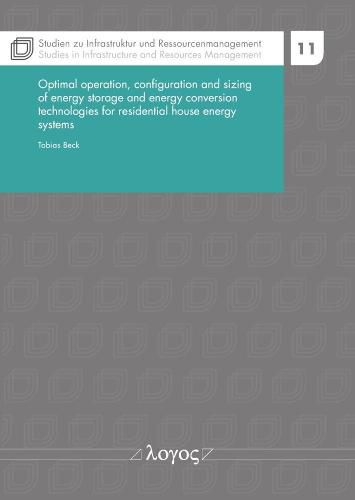Readings Newsletter
Become a Readings Member to make your shopping experience even easier.
Sign in or sign up for free!
You’re not far away from qualifying for FREE standard shipping within Australia
You’ve qualified for FREE standard shipping within Australia
The cart is loading…






In recent years a rapid growth in the interest in self-consumption of electricity generated by distributed electricity generation technologies such as rooftop photovoltaic (PV) systems has been observed in the residential sector. Due to this development, future residential house energy systems will face an increased complexity with respect to operation, system configuration and sizing of generation and storage technologies. In this thesis, a mixed integer linear programming model for the integrated operation, configuration and sizing of house energy systems is developed and discussed with respect to its applicability to the specifics of self-consumption in residential dwellings. The conducted scenario analysis shows, that over a wide range of assumptions, PV is a robust measure to decrease the total cost of ownership for heat pump and gas boiler based house energy systems. The existence of a feed-in-tariff and the electricity price structure have a much larger influence on the results than the energy price development. A feed-in-tariff generally incentivizes larger PV systems with higher levels of self-sufficiency, whereas small demand-driven PV systems with high levels of self-consumption are favored in absence of a feed-in-tariff. Overall, the proposed model is regarded as applicable for the identified minimum flexibility requirements for the employed generation technologies. The results from the scenario computations provide a clear and robust picture of the role of electricity generation technologies and flexibility options for future house energy systems.
$9.00 standard shipping within Australia
FREE standard shipping within Australia for orders over $100.00
Express & International shipping calculated at checkout
In recent years a rapid growth in the interest in self-consumption of electricity generated by distributed electricity generation technologies such as rooftop photovoltaic (PV) systems has been observed in the residential sector. Due to this development, future residential house energy systems will face an increased complexity with respect to operation, system configuration and sizing of generation and storage technologies. In this thesis, a mixed integer linear programming model for the integrated operation, configuration and sizing of house energy systems is developed and discussed with respect to its applicability to the specifics of self-consumption in residential dwellings. The conducted scenario analysis shows, that over a wide range of assumptions, PV is a robust measure to decrease the total cost of ownership for heat pump and gas boiler based house energy systems. The existence of a feed-in-tariff and the electricity price structure have a much larger influence on the results than the energy price development. A feed-in-tariff generally incentivizes larger PV systems with higher levels of self-sufficiency, whereas small demand-driven PV systems with high levels of self-consumption are favored in absence of a feed-in-tariff. Overall, the proposed model is regarded as applicable for the identified minimum flexibility requirements for the employed generation technologies. The results from the scenario computations provide a clear and robust picture of the role of electricity generation technologies and flexibility options for future house energy systems.